Smart Cable for Smart Buildings
The terms “smart” or “intelligent” are synonymous when referring to designing today and tomorrow’s commercial buildings. A smart or intelligent building incorporates ICT-based systems, services and technology to reduce operating costs, optimally utilize space, and improve energy efficiency at all stages of its life cycle. And smart buildings are one of the fastest growing segments in the enterprise market. In fact, it has been reported by market researchers that the compound annual growth rate (CAGR) for smart component solutions and services will grow 11-15% in the next four years.
Smart buildings require an intelligent infrastructure that can support an integrated network of building systems. The cabling infrastructure becomes the foundation of a smart building. But a smart building is only as smart as its infrastructure design and component choices. And because of the diversity of applications and their requirements and locations, network designers are looking at unique solutions, such as Paige’s long-distance GameChanger Cable™ to reach these devices.
Smart Applications
For over 30 years the Information and Communications Technology (ICT) industry has been designing and installing the cabling infrastructure for voice and data applications. Data and voice structured cabling easily became standardized to address generic requirements. Most installations were cookie-cutter designs as the cable was pulled from the telecom room (TR) to work area outlets located 15” above the finished floor for connection to computers and phones.
Standards were put into place so that manufacturers’ cable and connectivity could be interchangeable, versus previous proprietary systems. IEEE-802.3 deemed that due to bandwidth requirements along with allowing backwards compatibility, that four-pair copper cable be limited to 100 meters (m) from the active equipment. Voice over Internet Protocol (VoIP) introduced power to be run alongside data within the same cable, which reduced the number of cables to the work areas, but the distance to the device remained limited to the same 100-meter rule.
IP cameras over twisted pair and fiber opened the floodgates for additional devices to jump on the network through the Ethernet protocol. More network applications became IP-enabled, including wireless access points, access control, lighting and building automation systems. The good news is that these applications when integrated with each other create a smart building which leads to energy efficiency, resulting in a better environment for the users and cost savings for the building owners.
The challenge of designing the cabling infrastructure for an intelligent building is that the applications may have their own unique cabling and layout. For example, some LED lighting fixtures are connected directly with a point-to-point copper cable while others are connected to a node and then daisy chained to the devices. Other challenges are that these devices are not terminated to a work area outlet, but to a service outlet which could be in the ceiling or even waist height, and many located outside the 100m limit. But where there are challenges, there are solutions.
Smart Standards
Standard bodies such as ISO, TIA and BICSI are addressing the unique requirements for structured cabling to help the designers, consultants and contractors install systems to build a reliable network. ISO/IEC 11801-6:2017 is the international standard that specifies generic cabling within premises comprising of a single or multiple buildings on a campus and is in sync with the North American TIA standards from ANSI (American National Standards Institute). ANSI/TIA published TIA-862-B-2016 Structured Cabling Infrastructure Standard for Intelligent Building Systems to provide minimum requirements for intelligent building cabling to support applications that use Ethernet communication, as well as accommodate other protocols that are typically used between devices. Specific content in the TIA standard provides guidelines for cabling types, topology, design and installation best practices and test procedures. However, this standard follows the other previous TIA cabling standards to deploy applications over the same generic structured cabling topology used for telecommunications applications. The main differences are terminology, such as equipment outlet versus telecom outlet, and distributor rooms to denote the location of termination equipment, which might not always be in a TR. Also, there are exceptions for coverage area topologies, such as a direct connection, as discussed in their Annex C. But, once again, the copper twisted pair cable is limited to 100 meters.
BICSI delves deeper with their published ANSI/BICSI-007-2017 standard, Information Communication Technology Design and Implementation Practices for Intelligent Buildings and Premises. This standard provides recommendations for design and implementation of the cabling system, as well as specific building system applications for any size building or premise. The BICSI standards leverages the requirements by TIA and ISO but goes more granular into the best practices for planning spaces, topology and media selection for the additional building applications. In addition, the BICSI standard recognizes that in many instances, the cabling infrastructure and cabling selection may vary. According to the BICSI-007 standard, “Layout and selection of horizontal cabling should be planned to incorporate the deployment of numerous building systems that may utilize an IP network” In addition, BICSI-007 recognizes that “Some building systems may require cabling other than balanced twisted-pair or optical fiber because of system and application architecture or manufacturer requirements. Horizontal cabling should be planned to accommodate future equipment needs, which includes transitioning from proprietary systems to IP-based structured cabling, increased system bandwidth requirements, and the need to provide or increase power supplied through communications media. Primary decisions for cabling type are often based on manufacturer requirements, signal type, distance and location, power requirement, and longevity of building occupancy.” Currently BICSI looks at all options and is reviewing longer-distance copper cable options such as the GameChanger.
Smart Choices: Thinking out of the box
Since it’s a fact that the building applications out outside of the realm of computers and phones and now encompass wireless access points, security cameras and access control, to name a few, the distance will often be located well outside the 100m limits from the switch or cross connections. Some designers consider a zone cabling layout (which is a horizontal connection point between the telecom room and the device), but even that alternative is limited to 100 meters. The answer for smart contractors and designers is to implement the long-distance GameChanger cable from Paige Datacom for both data and power.
Often it pays (or saves) to exceed the standards. Many distances for intelligent building devices from the active equipment are exceeded by application-based cabling and requirements unique to the specific system. The patented GameChanger cable more than doubles the distance of Category 6 or Category 6A (shielded, unshielded or outside plant) out to 260 meters (850 feet). And in keeping with best practices, as recommended by the BICSI standards which states, “Horizontal cabling for intelligent building systems should be tested as part of the building’s and premise’s structured cabling solution,” the GameChanger cable can be tested with most industry field testers. Check out more information on testing the GameChanger:
As the intelligent building systems expand and the Internet of Things (IoT) continue to explode, more devices will require network connectivity. In-the-know designers and installers will think outside of the box in selecting the appropriate cabling infrastructure to specifically address the application requirements and endpoints. To see how GameChanger is the smart choice for intelligent buildings, check out our resources and our white paper.

